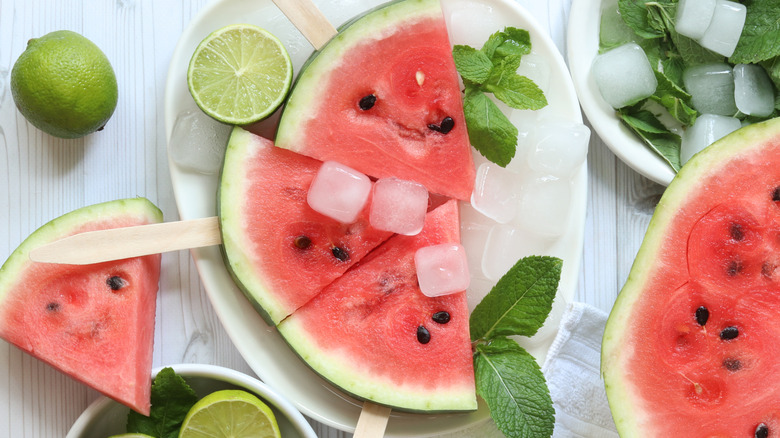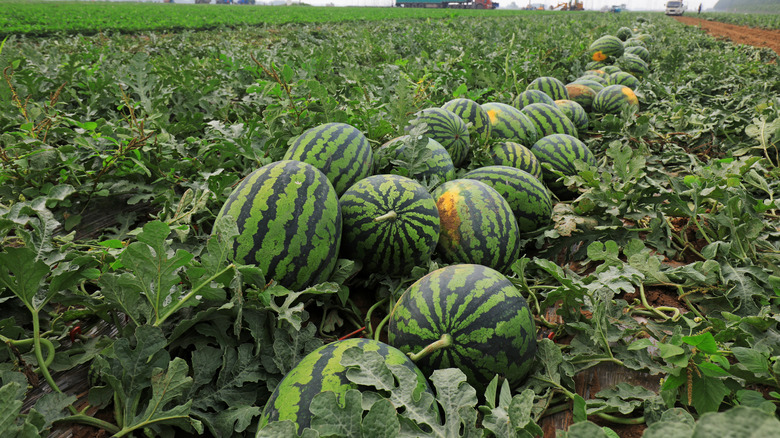The Country That Produces The Most Watermelon Is Far From Tropical
Think where you see watermelon growing. Odds are you'll conjure up images of a vibrant tropical setting surrounded by lush foliage and crystal lagoons. That's understandable — watermelons are believed to have originated in tropical African regions and ideally need a warm temperature to thrive — around 70 to 90 degrees Fahrenheit. But what if we told you that the world's largest global producer isn't tropical at all? It's China, a largely temperate country.
In 2022, global annual watermelon production nearly totaled an eye-watering 100 million tons, with China firmly in the top spot, producing 60.4 million tons — more than all the other countries combined (per Worldostats). For context, the second-largest producer — Turkey — barely makes a dent, with a comparatively small annual production of 3.4 million tons.
China is the largest producer of many fruits — including strawberries — and this is due to having a vast expanse of agricultural land and a remarkably diverse climate. This allows for watermelon production across a wide range of regions. In the northwest, Gansu province features hot temperatures and low precipitation — ideal for watermelon farming. Here, farmers are known to use advanced techniques such as open-field sowing and seedling transplanting, which help retain soil moisture and boost crop yield. Further west, Xinjiang province stands out for its distinctive produce. With super hot days and cool nights, this region creates the ideal conditions for growing exceptionally sweet, large watermelons, making Xinjiang melons particularly prized.
Inside the world's largest watermelon empire
China is the most populous country in the world, with a staggering 1.4 billion people — and it has the highest per-capita watermelon consumption globally. Annually, China consumes 16 billion watermelons (known as xī guā), equating to around 100 pounds per person and comprising 70% of the world's total consumption (per The China Academy).
China's massive watermelon consumption makes total sense when you consider the fruit's unique cultural significance. Watermelons are much more than a delicious fruit — they hold a special space in Chinese traditions. Their rounded shape and large size are considered positive in feng shui, symbolizing harmony and completeness. Additionally, the color red and the abundance of seeds are traditionally seen as auspicious symbols of prosperity and luck. Because of these associations, watermelons are a popular gift during important festivals like Lunar New Year. Beyond symbolism, watermelons are also valued in traditional Chinese medicine for their cooling properties.
Watermelons are also enjoyed as refreshing summer snacks, with traditional dishes like xī guā lào — a thickened watermelon jelly originating from Beijing — often eaten to help cool down during sweltering days. In accordance with a frugal tradition rooted in rural Chinese food culture, dishes like là chǎo xī guā pí (watermelon rind stir-fry) demonstrate that the rinds don't need to be discarded. You can even pickle watermelon rinds or enjoy them in a variety of tasty ways.


